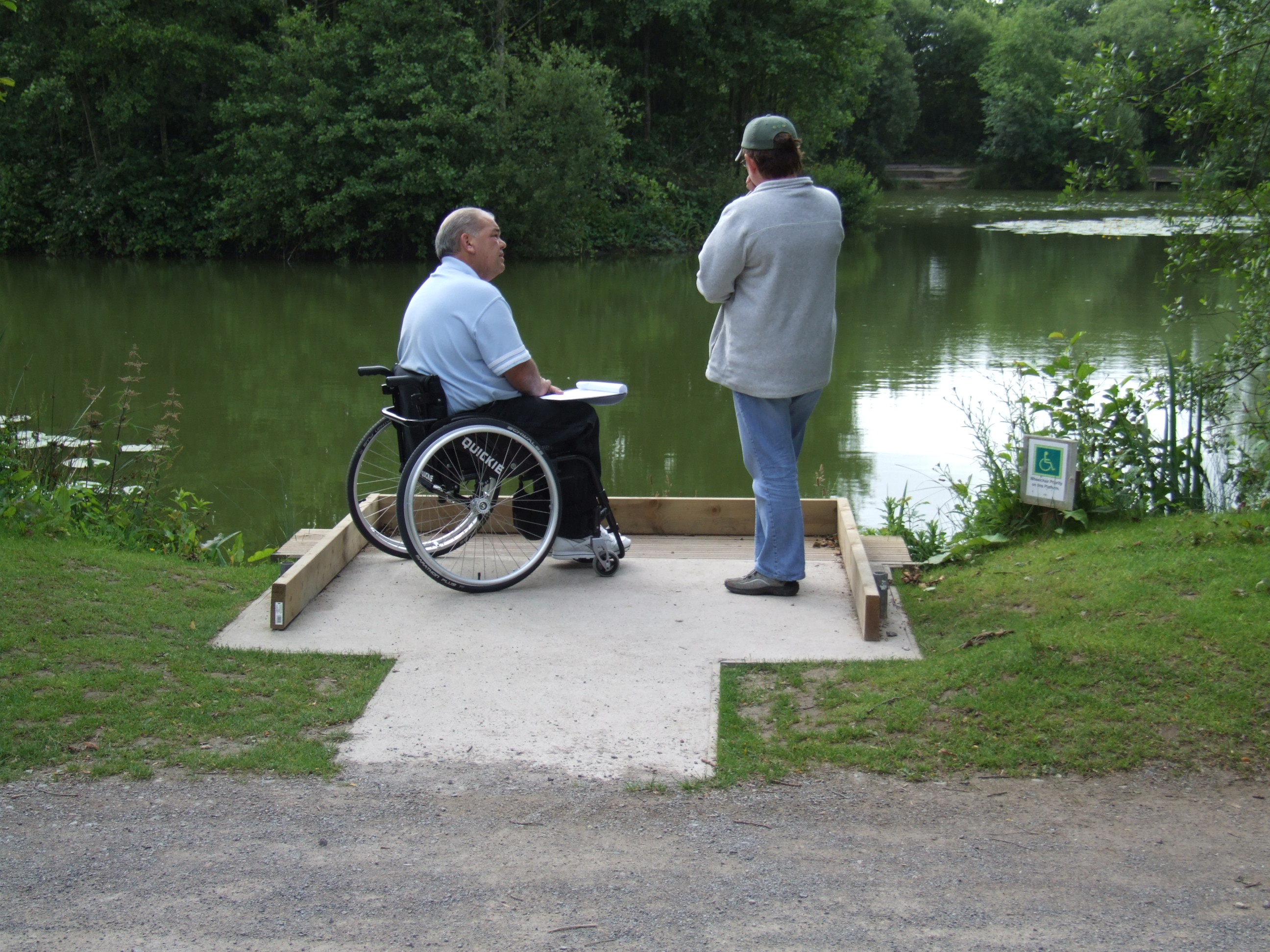The existing angling environment is mainly in a natural one, the introduction of commercial fisheries back in the early 1980`s led to a number of farms diversifying from crops to recreation and the current style of fisheries since parks, rivers and local ponds evolved. The needs of disabled people or the thought that disabled people may wish to use their new style fisheries were mainly not considered, however BDAA began to see the rise in interest by disabled children and adults as the charity strongly promoted the sport/activity to thousands of disabled people of all ages. The task was now to help fisheries understand what their responsibility and provision of access for disabled customers and members was under the then Disability Discrimination act now the Equality act meant.
In partnership with the Environment agency we developed a fisheries specific access audit for fisheries, the check list allowed us to look at barriers to disabled people in angling, it was evident this void was far bigger than we or the EA envisaged, so much so we had then to train members of the charity to be specialists in understanding access auditing and how to design better or different ways to provide facilities. The BDAA Access guidelines were developed and free to fisheries so they could self improve their fisheries with the help of the first guidance, a site visit with written report began to change the natural environment to a natural accessible environment purely due to the involvement of our work.


.JPG)


.JPG)



.JPG)


.JPG)
.JPG)

.JPG)
.JPG)

.JPG)
.JPG)
.JPG)
.JPG)









